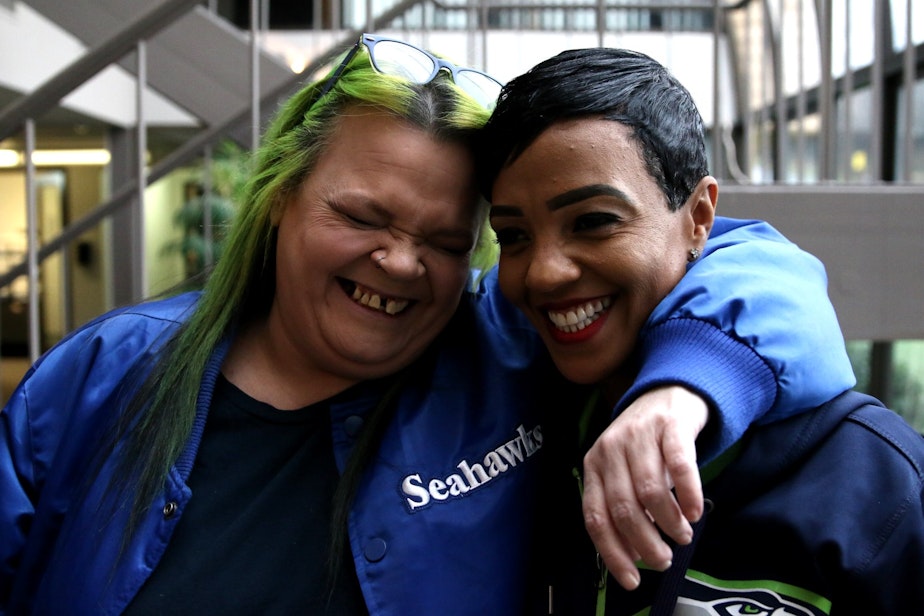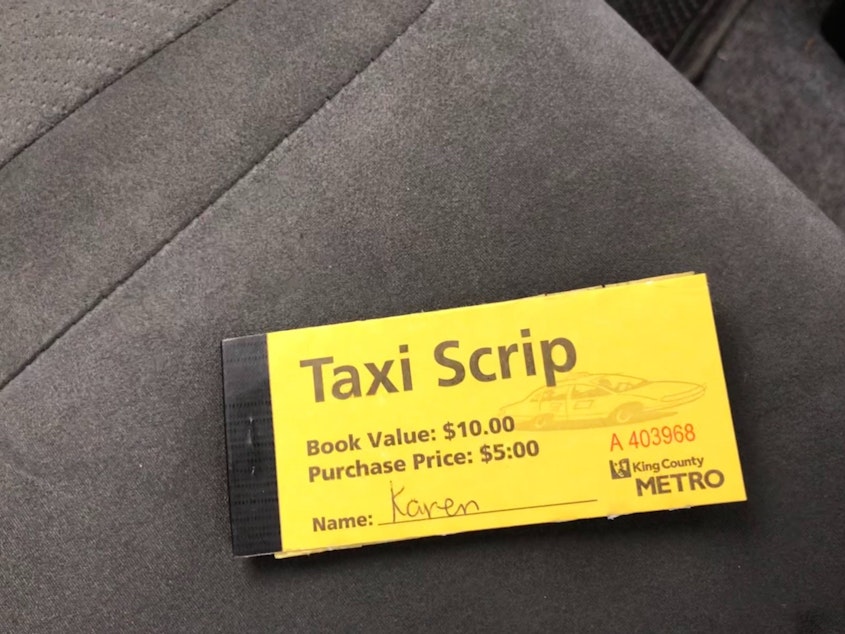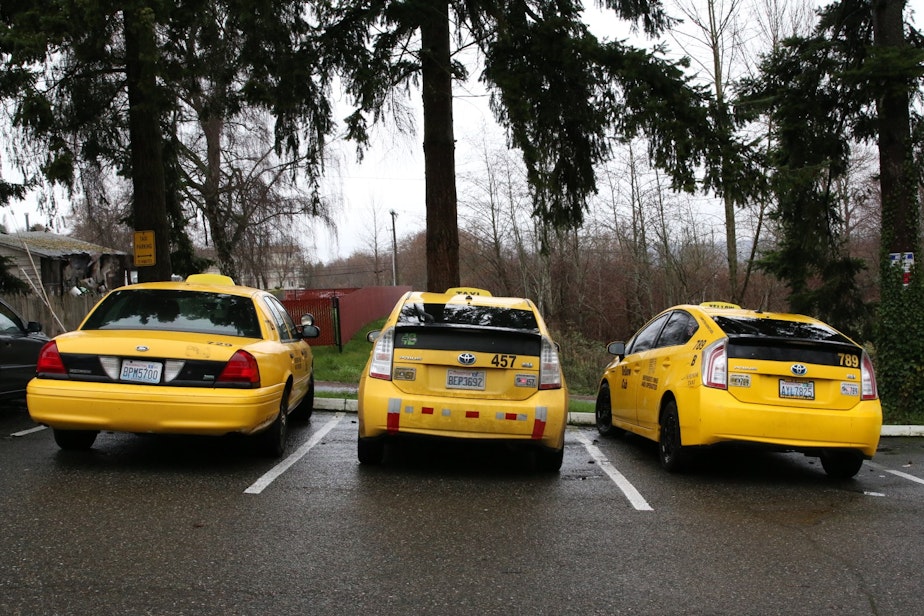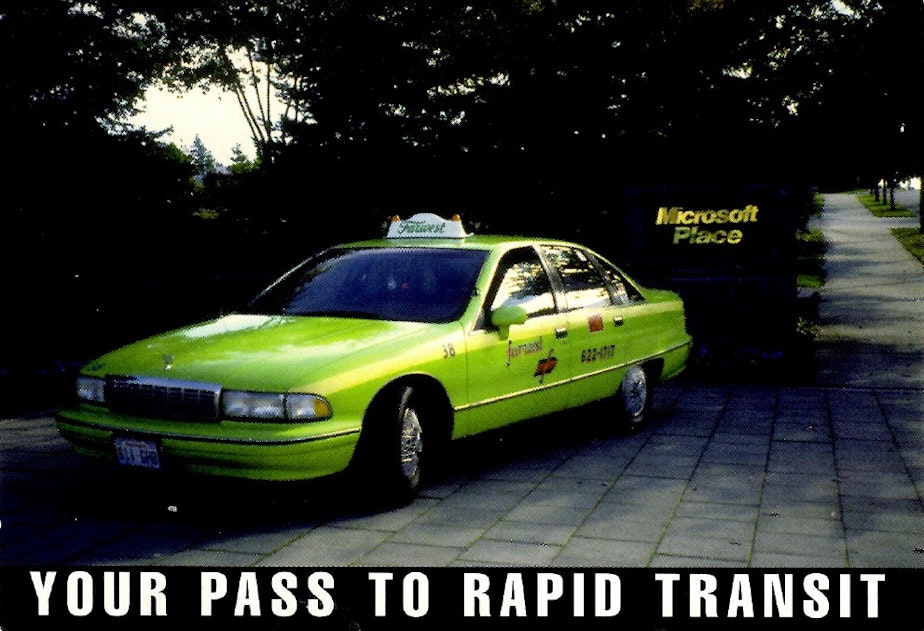How this Seattle taxi company aims to take on Uber and Lyft

In the decade or so since Uber came to Seattle, its business has exploded. Taxi cabs, on the other hand, have struggled to hang on.
Now, some of them say they’re ready for a comeback. And they're borrowing some techniques from Uber’s playbook.
The other day, I took a cab in Seattle. It’s kind of an eccentric thing to do these days. People mostly take Uber or Lyft when they need to hire a car.
There are about 30,000 Uber and Lyft drivers licensed to drive in King County. But there are only around 800 taxi drivers. That’s even fewer than the 900 or so cabs around in 2010, the year before Uber came.
Throughout Uber and Lyft’s dominance, many cab companies have been surviving on government and hospital contracts, according to Tina McCulloch at the Tukwila headquarters of Seattle Yellow Cab.

Her company ferries homeless kids to school, takes Medicaid patients to the hospital. Those are jobs Uber has not been able to get, because Uber drivers aren’t as heavily vetted.
Sponsored
Taxi drivers submit to a thorough background check, take drug tests when contracts require it, and are fingerprinted. In contrast, Uber's process is much simpler.
This distinction is what's kept taxi businesses alive. And now, they say they're ready for a comeback. They're starting to upgrade their technology to better compete with Uber.
There’s been a lot of ground to cover. Until recently, Seattle Yellow Cab matched drivers with customers using unstable software on an ancient computer server that squeaked like there was a mouse running on a wheel inside. It crashed constantly.
Two taxi drivers: One switched to Uber, one didn't. Both of their lives changed.
“Sometimes customers would call and we’d be like, 'Well, can you call back in 15 minutes? Our system is down,'" McCulloch recalled. "It was so unprofessional, and it would happen all the time.”
Sponsored
Last year, they bought much faster software and moved it to Microsoft’s cloud, Azure. Now, drivers and riders are matched almost instantly.
“You’re going from the Flinstones to the Jetsons, is essentially what we’ve done in six months,” McCulloch said.

Seattle Yellow Cab also upgraded its app, to make the customer experience a little more like Uber. Now, you can see an estimated fare before you ride and how long until your driver arrives. You can pay by credit card and there are even little icons showing cars that are in the area.
It's not just one company; Seattle Orange Cab and FarWest Taxi have also invested in phone apps.
Sponsored
To see how the taxi cab industry got so far behind, you have to go back to 2011. Times were good back then for cabs, which delivered not only people, but goods, too.
"We used to carry everything from refrigerators to Christmas Trees," recalled Manny Sekator, superintendent at Farwest Taxi.

Around that same time, Amazon was hiring like mad, picking up engineers during the recession as though they were gold bars lying on the sidewalk. And unlike Microsoft, which grew in the suburbs, Amazon was an urban company. Some of its employees didn’t even have cars —but they did have money to spend.
This ostensibly would have made them the perfect taxi cab customer. But tight limits on cab licenses meant there weren’t enough cabs to satisfy that demand.
Sponsored
Meanwhile, Uber had flashy new technology. It swept in and scooped up all those new customers.
"They were actually able to come in and grab a market that hadn’t been touched yet," McCulloch said.
But today, Seattle Yellow Cab’s Bershabet Yilma is confident her company’s finally ready to take on Uber.
"I'm confident, but not cocky," she said.
As the city grows more dense, Yilma said, the small advantages cabs have over Uber and Lyft may become more important.
Sponsored
She said a small but growing number of customers are realizing they can hail a cab from the curb simply by raising an arm, leaving smart phones in pockets. You might compare the value to that of the flip phone, a seemingly obsolete device that’s found a second life for people seeking to escape their smart phone addictions.
Sponsored
Hailing a cab from the curb in the rain won’t appeal to everyone. But it’s something else Uber and Lyft cannot do.
Yilma even thinks Seattle Yellow Can can win back drivers. She said that if a driver can pass the background tests, “we will guarantee you’re going to be making more money than you ever did with Uber and Lyft."

When Yilma pulled up the Seattle Yellowe Cab app's fare estimating tool, the app crashed. But she promised everything would be stable by the time the company launches its big advertising campaign in three to six months.
As for Uber, its spokesperson Caleb Weaver is not scared of taxis.
“We see a role for a whole wide variety of transportation options," he said. "And we support competition between all of them.”
There’s a long road ahead for cab companies to win ride hailing customers. Uber and Lyft have totally changed customers’ expectations.
I discovered how deep those changes run when I used a taxi the other day for this story. The driver pulled up to my stop, and I said goodbye.
“So are you going to pay that?” the driver asked.
“Oh, yes I forgot!" I said.
I was so used to Uber’s app charging me automatically that I almost left without paying.
KUOW's Joshua McNichols has been looking into how Uber changed Seattle. It's part of a series airing throughout February and March, as the city of Seattle studies whether Uber and Lyft drivers are earning a living wage




